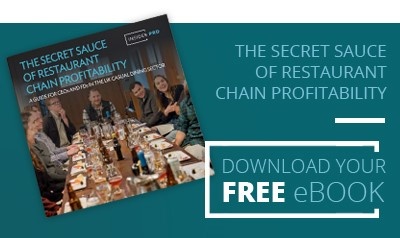The casual dining market works on very tight margins. Added to that, diners demands appear to continually increase on all levels:
- good quality food delivered quickly
- attention to detail regarding food preferences
- authentic experience of different cuisines
- an interesting / entertaining dining experience
And it is against this backdrop, that some are struggling to compete, whilst others are expanding.
So what is it that the more successful casual dining restaurants in the UK do that sets them apart from those who fail?
Like businesses in many other sectors, they pay pay attention to the small stuff.
They know that incremental changes can make a huge difference to restaurant profit and loss.
And they know how to get their staff on board to implement those changes.
Based on our restaurant consulting experience, let's look at a few examples:
1. Table Turnover
The most successful restaurants in the UK casual dining market know how to achieve an average dining time of under an hour without compromising on the customer experience. They work hard to achieve, that knowing that the impact on table turnover can add a huge amount to the bottom line.
(See our blog "4 ways to improve average restaurant table turnover rate" for more information.)

2. Reducing waste
A recent WRAP (The Waste and Resources Action Programme) report stated that:
"for every $1 restaurants invested to cut down on food waste, they saved on average $7 in operating costs over a three-year period."
Clearly that 600% ROI should be appealing to all.
And it's not as difficult as it might sound.
In fact, the 100 restaurants that WRAP surveyed managed to reduce waste by an average of 26% within a year.
Over 1 million tonnes of food is wasted by UK restaurants and pubs every year, so clearly there is a lot to go at. But where do you start?
According to a UK hospitality survey, when diners are asked why they didn't eat everything that was presented to them 41% said there was too much on the plate. So reducing portion size should be a starting point.
Portion size contributes to 34% of overall food waste in UK restaurants.
A further 45% of waste occurs during the preparation, and another 21% is spoiled product / ingredients.
Changes in menu choices, stock rotation, procurement and preparation can all chip away at the waste % and lead to significant overall cost reductions.
3. Increasing sales
Small increases in sales, as low as a few extra drinks per day, can have a large impact on profit.

The best thing about the example above, is knowing that you can easily devolve responsibility for achieving that growth on staff members. We've seen that adopting a system of easy to understand restaurant KPIs with achievable goals can have a big impact on profitability.
(See our blog "The UMAMI approach to setting restaurant KPIs" for more information.)
4. Better rota management
Again, small changes can make a significant difference to restaurant operational efficiency. In a chain of 50 restaurants with 4 members of staff involved in the pre-service preparation work, cutting just 15 minutes off their prep time could add £182,000 per year to the bottom line.
We've shared just a few examples in this blog, but to view more ways (18 to be precise!) to drive restaurant profit, download our 60 page eBook, The Secret Sauce of Restaurant Chain Profitability.


